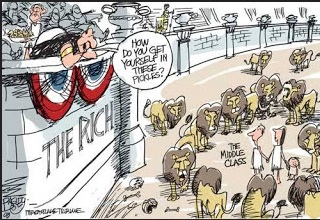The British Vancouver Housing Authority has learned from the mistakes of New York. All new building are mixed income housing. Meanwhile, back in Manhattan, there is no sign that the housing predicatment of people who live and work in the city and contribute to its well-being have had any of their houseing problems solved.
Oshrat Carmiel writes: The newest condominium tower in midtown Manhattan’s billionaires district is ready to open its doors to buyers. It took almost a decade to get there.
The skyscraper at 53 W. 53rd St., designed by French architect Jean Nouvel and rising next to the Museum of Modern Art, will start marketing its 139 apartments next week, with prices starting at $3 million. Planned since 2006, the project endured the real estate bust and a global financial crisis that decimated demand for luxury homes. Now it’s emerging when buyers can’t seem to get enough of them.
Like many of the supertall buildings going up in Midtown, 53W53 commands Central Park views.
“We’re very eager to begin,” said David Penick, the New York-based managing director for developer Hines, which is building the project with Goldman Sachs Group and Singapore-based Pontiac Land Group.
The project’s latest challenge: competing for buyers with about a half-dozen other luxury condo towers that are under construction nearby. The developments—including Vornado Realty Trust’s 220 Central Park South and Aby Rosen’s 100 E. 53rd St.—are transforming Midtown neighborhoods known for hotels and corporate offices into communities of wealthy people from around the world. They often do not live in their apartments.
The 1,050-foot (320-meter) tower, the size of the Chrysler Building, will rise near the corner of Sixth Avenue between 53rd and 54th streets, on land once owned by the adjacent museum. MoMA will expand its galleries in the bottom three floors of the residential building, whose signature architectural flourish is a web of diagonal concrete beams that gird the structure from the outside before tapering into a pinnacle more than 82 stories into the sky.
“It is the flag—not only of the building—but the flag of the MoMA on the skyline,” says Nouvel, who also designed a Ferrari factory in Italy, an art museum in Abu Dhabi, and a 23-story condo building near Manhattan’s Chelsea waterfront.
“We tried to do a kind of dialogue with the views and with the buildings around,” he says. “You frame it with different shapes in the city and the neighboring buildings.”
53W53 tapers into a pinnacle more than 82 stories into the sky.
Amenities at the tower include a movie theater, a private dining room overlooking Central Park, and temperature-controlled wine vaults. Residents can buy studio apartments on the 14th through 16th floors for their personal service staff.
The project was conceived in 2006, before Houston-based Hines acquired the site from the museum for $126 million. Manhattan’s luxury property market has soared in recent years, with wealthy investors paying ever-higher prices for trophy homes.
“The basic strategy hasn’t really changed,” he says. “It’s a very attractive location adjoining the Museum of Modern Art. We always knew that it would be high end.”





